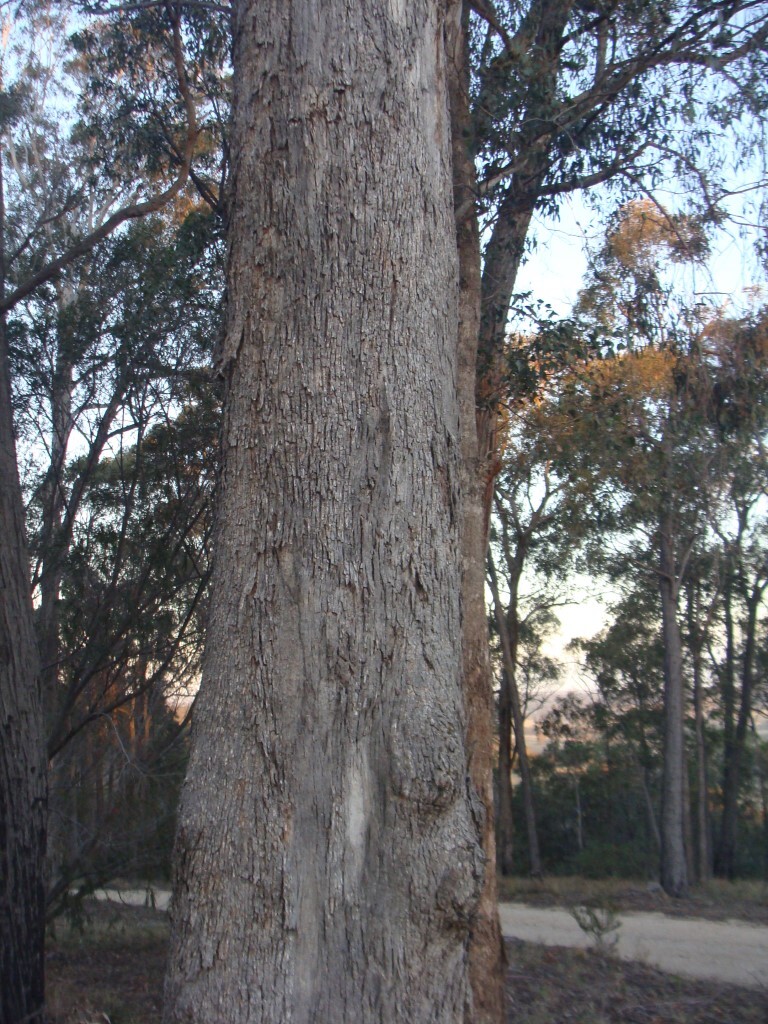Eucalyptus bosistoana
F.Muell. Coast Grey-boxTree to 60 m tall; bark rough over part or most of trunk, box-type, usually thin. Juvenile leaves petiolate, opposite for a few pairs then alternate, orbicular to ovate, to 10 cm long, 9.5 cm wide, pale green; adult leaves petiolate, alternate, lanceolate to narrowly lanceolate, 10–20 cm long, 0.7–2 cm wide, concolorous, dull to slightly glossy, green; intramarginal vein remote from edge; reticulation dense, partly obscured, with numerous island and intersectional oil glands. Inflorescences mostly axillary, unbranched; peduncles to 1.5 cm long, 7-flowered; buds pedicellate, clavate to ovoid, to 0.9 cm long, 0.4 cm diam., no scar; operculum conical or hemispherical; stamens irregularly flexed; anthers adnate, globoid; ovules in 4 vertical rows; flowers white. Fruit pedicellate, cupular or barrel-shaped, to 0.7 cm long, 0.7 cm diam.; disc descending; valves 5 or 6, rim level. Seed brown, irregularly ovoid and slightly flattened, surface shallowly reticulate, hilum ventral. Flowers Nov.–Mar.
GipP, EGL, EGU, HSF. Also NSW. Occurs mostly on loamy soils east from Woodside, around the Gippsland Lakes and near the coast, extending inland further east along the Cann and Genoa River valleys.
One of the few 7-flowered species in eastern Australia which is recognizable by having 5 or 6 valves to the fruit (cf. E. leucoxylon).
Brooker, M.I.H.; Slee, A.V. (1996). Eucalyptus. In: Walsh, N.G.; Entwisle, T.J., Flora of Victoria Vol. 3, Dicotyledons Winteraceae to Myrtaceae, pp. 946–1009. Inkata Press, Melbourne.
 Spinning
Spinning

